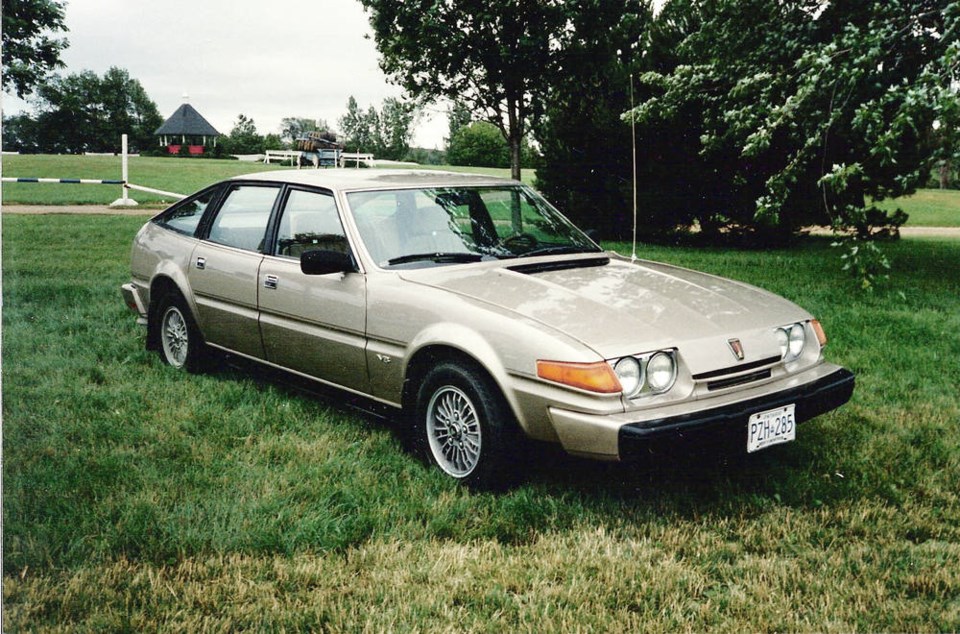The Rover name went back into the late 1800s to the Coventry-based bicycle firm of Starley & Hutch who built their reputation on the Rover safety bicycle invented by John Starley. This revolutionary bike had equal sized wheels and chain drive. The company became J.K. Starley & Co. in 1889, then Rover Cycle Co. in 1896.
The first motorcycle came in 1903 and the Rover Co. produced its first car in 1904, a one-cylinder model with shaft drive to the rear wheels. They gradually expanded to a variety of one-, two- and four-cylinder models and briefly offered the Knight sleeve-valve engine. Six-cylinder engines came in 1923.
Despite building a good reputation in England, Rover was unknown in North America until importing began after the Second World War.
Although a few prewar-designed cars came, it was the postwar Rover 75 with its quiet six-cylinder F-head (inlet valves in the head and exhausts in the block) engine that made the marque known here. It had a “cyclops” light in the grille and a profile influenced by the 1947 Studebaker.
Sometimes referred to as “the poor man’s Rolls-Royce,” Rovers appealed to a niche audience that valued a stately British bearing and old world wood and leather at an affordable price. It was exemplified by such models as the three-litre, which became the 3.5 when fitted with the ex-General Motors V-8 in 1967.
While Rovers were elegant and handsome in the classic English tradition befitting their “poor man’s Rolls-Royce” reputation, our subject was far removed from that. Unlike the classic British cars, it had a modern unRover-like aerodynamic profile.
When Rover became part of British Leyland in the late 1960s, its personality began submerging into that huge conglomerate. Rover cars left the North American scene in the early 1970s, although Rover and Range Rover utility vehicles stayed.
BL returned Rover cars to North America in 1979 with the Rover 3500, the first product of BL’s Specialist Division. The European motoring press had named it their 1977 Car of the Year.
Although also powered by sixes in Britain, Rover returned to North America with the 3.5-litre (215 cu in.) aluminum, overhead valve V-8 Rover had purchased from General Motors. Rover gave it larger valves and other modifications for the higher speeds typical of European motoring.
Initially fitted with SU carburetors, it arrived here with fuel injection. Although originally rated higher, with stifling North American emission controls both Road & Track and Car and Driver quoted just 133 horsepower.
Transmissions were a five-speed manual or three-speed automatic and suspension was MacPherson struts in front and a solid axle with trailing arms and coil springs at the rear. The rear shock absorbers provided self-levelling via suspension movement, not an engine-driven pump. It had rack-and-pinion steering and brakes were power assisted front discs and rear drums.
The 3500 looked large and substantial, stretching 4,851 millimetres (191 in.) long with a 2,814 mm (110.8 in.) wheelbase. It weighed just over 1,452 kilograms (3200 pounds). The unit construction fastback’s 11.9 cu. ft. trunk was accessed through a large hatch.
Although the 3500 was a luxury sedan with full power conveniences including air conditioning, those expecting traditional English walnut trim and Connolly leather upholstery would be disappointed because they would find neither.
Instead, one was met with vinyl trim and nylon velour seats (leather would come later). Instruments were carried in a rectangular module, which along with the steering wheel was mounted on the left or right depending on the market.
Car and Driver (5/80) reported that the five-speed accelerated to 97 km/h (60 mph) in 9.8 seconds with top speed of 179 km/h (112 mph). A long-legged top gear gave effortless highway cruising and a combined Natural Resources sa���ʴ�ý fuel consumption rating of 12 L/100 km (23.5 mpg).
As a roomy, stylish, good driving car introduced at less than $20,000, several thousand below comparable Mercedes-Benzes or BMWs which had only six cylinders, the 3500 should have had a sales advantage. Unfortunately, it was plagued by the then well-known British unreliability, particularly electrical, that kept it in the repair shop too much. Assembly quality was also judged inferior to its European competitors.
After an initial flush of interest, sales fell below expectations. The result was that it only stayed in the North American market for a couple of years, although it remained in production until 1986 with more than 96,000 built. The V-8 carried on in Land Rovers and Range Rovers.
The Rover 3500 seemed well suited for North America. It had adequate style and size and good performance from its American-designed engine. Unfortunately, it suffered the poor quality of the “British disease” due to labour strife and management problems, so it didn’t reach its full potential.



